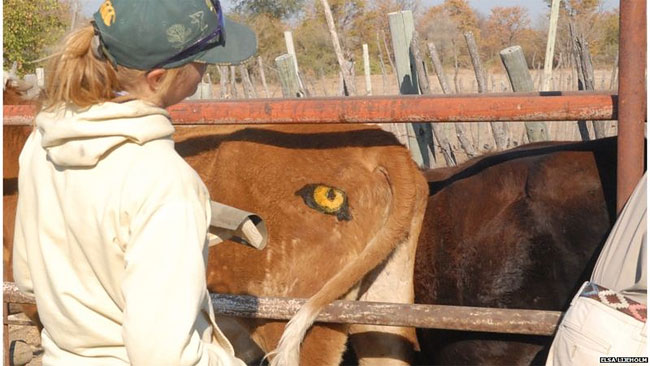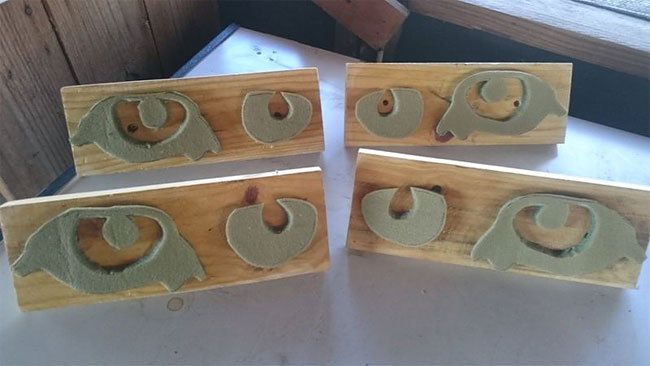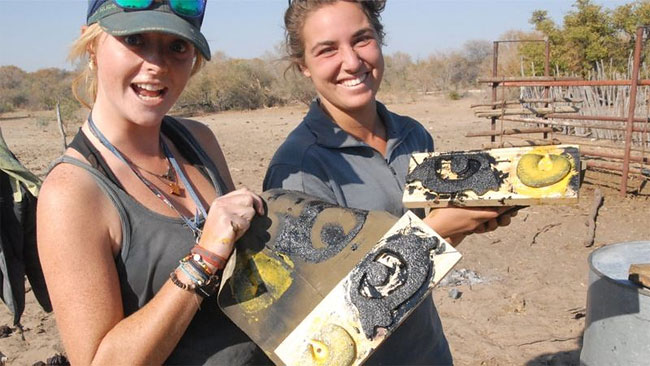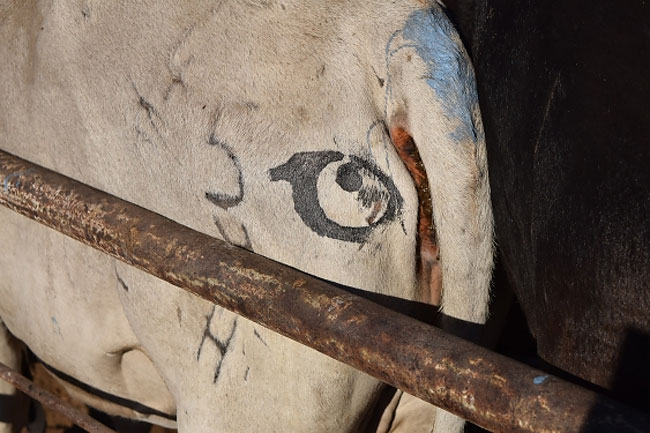Scientists Are Painting Eyes On Cows’ Butts To Stop Lions Getting Shot

Image courtesy of Ben Yexly / UNSW
For more than 10,000 years, ever since man started herding cattle for food and enrichment in Africa, lions have been a huge problem. A lion, or, more likely, a pride of lionesses – who are the real hunters – can ruin a small farmer’s livelihood by killing even a single cow, especially one that is pregnant or producing milk. Thanks to Botswana’s excellent conservation policies, the country has one of Africa’s largest wild lion populations – estimated at 3,000. For poorer subsistence farmers, though, it is harder.

Image courtesy of Elsa Lijeholm
On a field trip, Neil Jordan, a conservation biologist from UNSW, watched a lion stalk an impala for 30 minutes but suddenly abandon his prey when the antelope turned and looked at the predator. This made him think that perhaps it was the eye contact that had saved the impala. What if, he reasoned, an eye was painted on the rump of the animal? Would that have the same effect?

Image courtesy of Neil Jordan
“I was very reluctant to share the idea at first because it does seem a bit wacky,” Mr Jordan admits. “But when we ran a short trial in 2015, we got promising, but as yet inconclusive results.”

Image courtesy of Elsa Lijeholm
In the initial study, Mr Jordan and his team painted large eyes on a third of a herd of cows on a farm on the edge of a wildlife area near Maun, in the north of the country. The results were encouraging. Lions killed three of the 39 unpainted cows but none of the 23 painted cows was taken.

Image courtesy of Ben Yexly / UNSW

